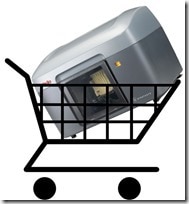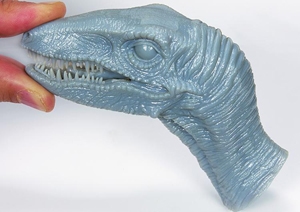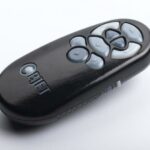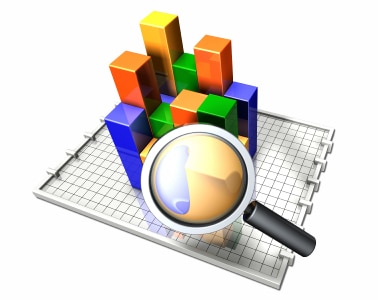 PADT has been in this prototyping business for a while, even before we called the machines that make physical parts directly from computer models a 3D Printer. When we started it was rapid prototyping and we have purchased maybe a dozen machines for our own use, and sold several hundred to our customers. As the cost of these systems comes down and the number of people interested in having their own 3D Printer goes up, we thought it would be a good time to share our experience with choosing systems with the community.
PADT has been in this prototyping business for a while, even before we called the machines that make physical parts directly from computer models a 3D Printer. When we started it was rapid prototyping and we have purchased maybe a dozen machines for our own use, and sold several hundred to our customers. As the cost of these systems comes down and the number of people interested in having their own 3D Printer goes up, we thought it would be a good time to share our experience with choosing systems with the community.
Here are six things that every person should do when they are shopping for a 3D printer. We even recommend that you write these down and fill out a form before you contact the first vendor.
Thing 1: Understand What you will use your Parts For
This seems obvious. You would not be looking for a 3D printer unless you knew you needed one and you knew what you needed it for. But in reality, it is very easy to get caught up in how powerful and just plane cool this technology is and you start thinking about what you can do, and you forget what you need to do. The best way to approach this is to not think about which technology you may end up with, that will point you in one direction or another. Just assume you push a button and a prototype of your part comes out. What would you actually use it for?
The key here is to be honest. If the reality is that your receptionist really likes models of Japanese Anime characters, and you plan on making models of such in an attempt to get her attention, then be honest about that. You need a printer with the detail and perhaps color capability for that. But if you really think about it you probably need one to make patterns for doing custom composite layups, so your use will be very different and the so will the system you need. She probably will be just impressed with your layup tooling. Well, maybe not but your boss will.
Our experience tells us that customers often get hung up on features that they get excited about, but when you look at the end use of their prototypes, they really do not need some of those features. We have seen people buy a machine because it was the only one that did this one thing they got fixated on. But in the end, they only make two prototypes that need it a year and the other 137 prototypes they make are kind of sucky. Make a list of all the uses and put a guess next to them that shows the percentage of parts that fit into that use. A typical example would be:
- 35% Mockups for design reviews
- 25% Models for the machine shop and vendors to help them plan machining
- 15% Fixtures for testing
- 10% Consumer testing and marketing mockups for ad campaigns
- 10% Fit models to build
- 5% Other
Thing 2: Benchmark the Machines on your Geometry

When we run into someone that is unhappy with their 3D Printer, three out of four timeswe find out that it just does not perform like they thought it would. And if we dig deeper we find out that when they were shopping for a printer, they just looked at parts that the various vendors gave them. Demo parts. They never made a variety of their own typical parts. This is especially true if they ended up buying a lower cost machine.
Here is a secret of every person selling a 3D Printer, that probably is no secret to you. They pick the demo parts they show you because those parts look really good on their technology. And if you are not closely familiar with the strengths and weaknesses of each technology, there is no way for you to know that the parts they showed you may be the only parts that actually look good on that technology.

Get four or five parts that are typical parts that you would prototype, and have them made on each technology. Even if the vendor tells you they can only afford to make one sample part for you (with the cost coming down the margins on these machines is low so few in the business can do a bunch of free parts for every potential sale), go ahead and pay money to get your geometry made. You may be shocked by the results, especially on some of the newer low cost machines.
Thing 3: Ignore Hype or the Herd
 Any fast growing industry has a lot of hype, and a lot of mob pressure to go with one technology over another. 3D Printing is no different, and in fact it is worse because this technology is so cool and interesting. The problem with hype and herd mentality is that the company with the best public relations people or with the “hippest” story gets all the attention regardless of the technology. And it feeds on itself. They get more attention because they got more attention.
Any fast growing industry has a lot of hype, and a lot of mob pressure to go with one technology over another. 3D Printing is no different, and in fact it is worse because this technology is so cool and interesting. The problem with hype and herd mentality is that the company with the best public relations people or with the “hippest” story gets all the attention regardless of the technology. And it feeds on itself. They get more attention because they got more attention.
A case in point is the recent introduction of a hand-held fused deposition modeling system. Very cool, lots of hype and interest. But really, who could use that for real work? Even a hobbyist is going to struggle with making anything useful with a tool like that. But there is a lot of hype around it right now and a huge amount of interest. I’ve had a taxi driver mention it to me when he asked what I do.
It is human nature to want to be part of something big. So it is hard to push that aside and look at each 3D Printer you are evaluating on its own merit. Not what the press is saying, not what other people are touting, not what is the newest and flashiest. We are talking basic “make me a useable part” here. Look at it with basic and non-influenced eyes.
Thing 4: Calculate the Total, Long Term Cost
 Of all the things listed here, this may be the hardest to do. There are so many costs that go into making prototypes. The initial cost of the machine is small compared to all the other costs. What we recommend you do is make a spreadsheet and list cost items in the first column, and create rows for each 3D Printer you are looking at, then fill it out. We like to put in the cost over three years.
Of all the things listed here, this may be the hardest to do. There are so many costs that go into making prototypes. The initial cost of the machine is small compared to all the other costs. What we recommend you do is make a spreadsheet and list cost items in the first column, and create rows for each 3D Printer you are looking at, then fill it out. We like to put in the cost over three years.
Here are some cost items we recommend people include:
- System
- Cleaning system
- Facility modification costs
- Build and support material
- Cleaning materials
- Maintenance fees
- Labor to prepare jobs
- Labor to post process jobs
- Facility square footage for machines, cleaning equipment, material storage, etc…
- Scrap rate cost (some systems have a higher scrap rate, you need to include the cost of lost time and material because of that)
Thing 5: Honestly Prioritize the Features you Want and Need

We also recommend that you prioritize the list. Marking things as Want and Need is a first step, then every one of those should also be ranked in order of importance. You can use a point scheme or you can just put them in order from most to least. This will help you sort through the gee-whiz stuff and truly understand where the value of your investment in 3D Printing can be found.
Needless to say, it is critical that you finish Thing 1, and refer to it, when completing this step.
Thing 6: Figure Out what is Good Enough, then Ask for More
OK, maybe this one sounds like a sales pitch: “You know what you really want, but really, trust me, you need more.” Experience tells us that this is actually true. When you are talking 3D Printing we run into customer after customer that felt the system they purchased was “good enough” for their needs then they realize it does not do what they need. And in most cases it is because they really needed a bigger machine, or they needed a more robust material than they thought.
The last thing you want to do is invest in a 3D Printer then six months later try and turn it in to get one that is bigger, faster, more precise, or that runs a better material. Now you are still paying for the more expensive system and you wasted money on the less expensive one. Be honest, upgrade in the beginning to what you really need in the long run not what you think you can get by with in the short run. Because, in the end, you will save money and have better parts.
Doing the Six Things and Getting that 3D Printer
You know you want one. You actually probably need one. We have been doing this for a long time and almost every customer that has made an intelligent investment feels like the investment has been a positive one. And by intelligent investment, we do not want to imply that they bought a system from PADT (although statistically, that may be true). What we have found is that these companies took their time, they used some variation of the steps listed above, and they treated their purchase as a long term investment.
You too can make a smart choice and make in-house 3D Printing part of your company, job, or even hobby. PADT is here ready to help you with that choice. We can show you the complete line of fused deposition and Polyjet 3D Printers from Stratasys. We can also provide some advice on what we think is a good fit for your needs, and help you capture data for the six things we have outlined here. And don’t forget, we have a full 3D Printing services offering, with all the major systems and materials. So we can show you the advantages of all of them by providing you with your outsourced parts while you look for an in-house solution.




















